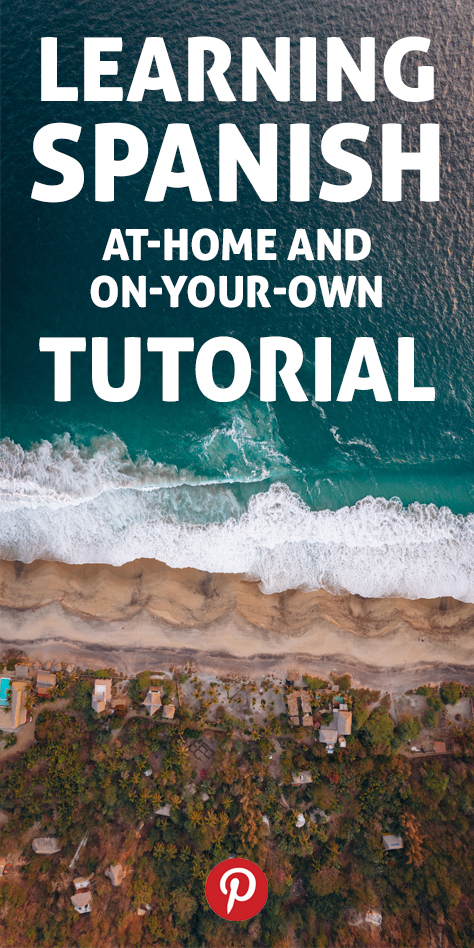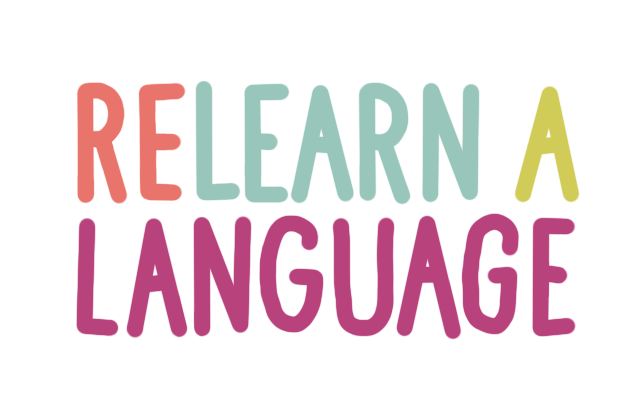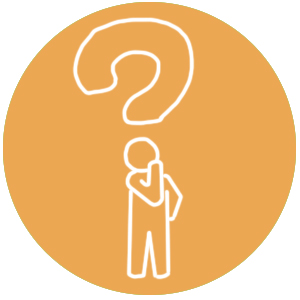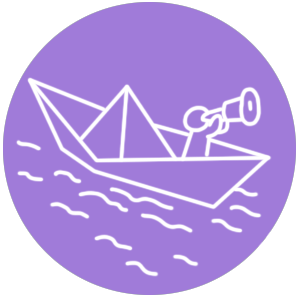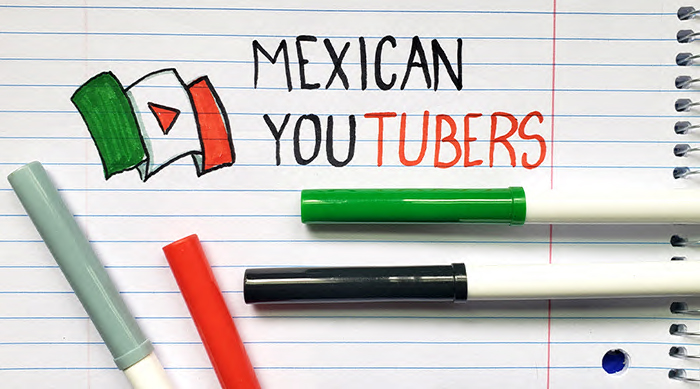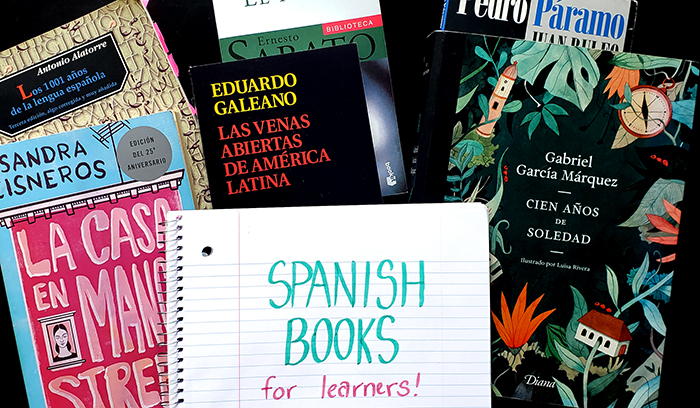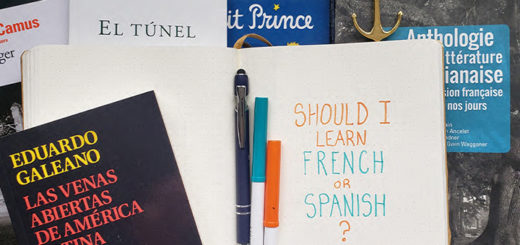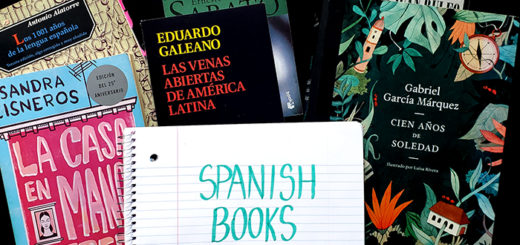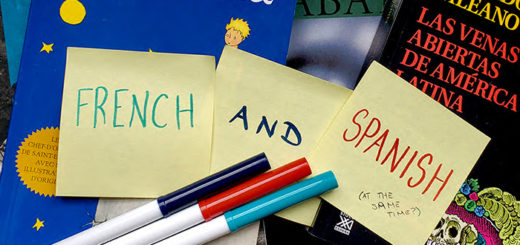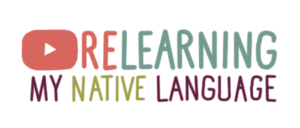How To Learn Spanish at Home and On Your Own (Step-by-Step Tutorial)
by Marissa Blaszko · April 3, 2021
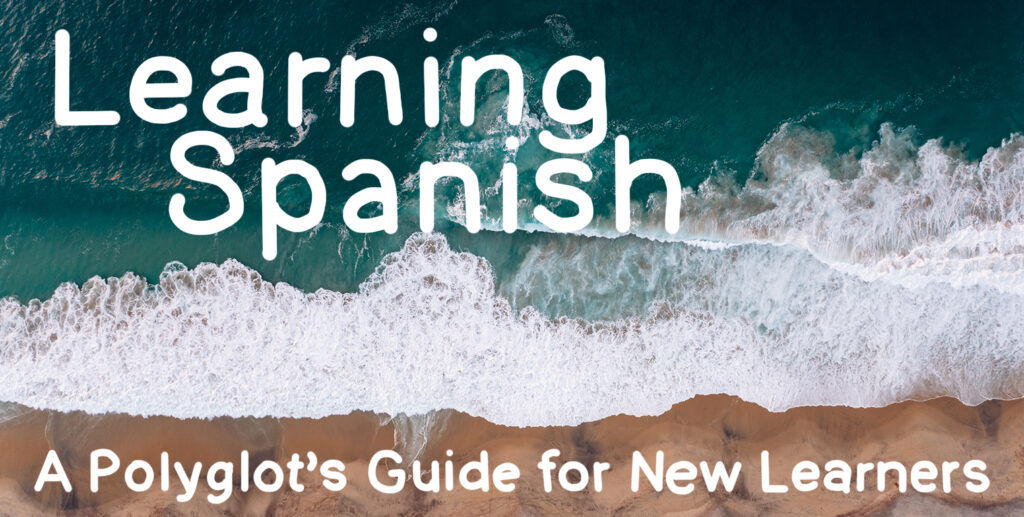
This is an ad-free, in-depth tutorial about how to learn Spanish.
That’s because most of the information on the internet about learning Spanish is written to sell you something.
When I was learning Spanish by myself, I was frustrated with the endless see of sales pitches on Google. I had to learn everything on this list the hard way.
And now that I’m a full-time language blogger? I want to make sure you don’t have to be as frustrated as I was.
To use this beginner’s guide for how to learn Spanish, just follow these two instructions:
✏️ REFLECT: When you see this box, stop and think about what you just read. If you have a pen and paper, I encourage you to journal about it.
✅ PLAN: When you see this box, stop and follow the instructions. These will be your first actionable steps in learning Spanish.
AT THE END OF THIS TUTORIAL, YOU WILL:
(1) have a ton of great learning Spanish resources and
(2) know how to use those resources to *actually* learn Spanish.
The only catch is that you have to actually use this tutorial by following those two above instructions.
So now: let’s start planning your Spanish learning journey.
FYI, some of the links in this article are affiliate, meaning I may make a small commission if you decide to make a purchase at no cost to you. However, I only link to products I myself use.
How To Learn Spanish: Tutorial Steps
Click to jump ahead, but my recommendation is that you follow this tutorial in order.
1. Myths & Facts about Learning Spanish
By the end of this section, you will understand the common problems someone has trying to learn Spanish. This way, you don’t fall pray to some of them yourself
When I first started learning Spanish as an adult, I thought I was a language failure.
I had tried learning Spanish in school, but nearly failed all of my classes.
I had tried learning Spanish with the best apps I could find, but still couldn’t understand a single line in any movie.
So before we get into anything else, I want to clear up the most common myths about how to learn Spanish.
(Since, honestly, I wish someone had told me all of this long ago.)
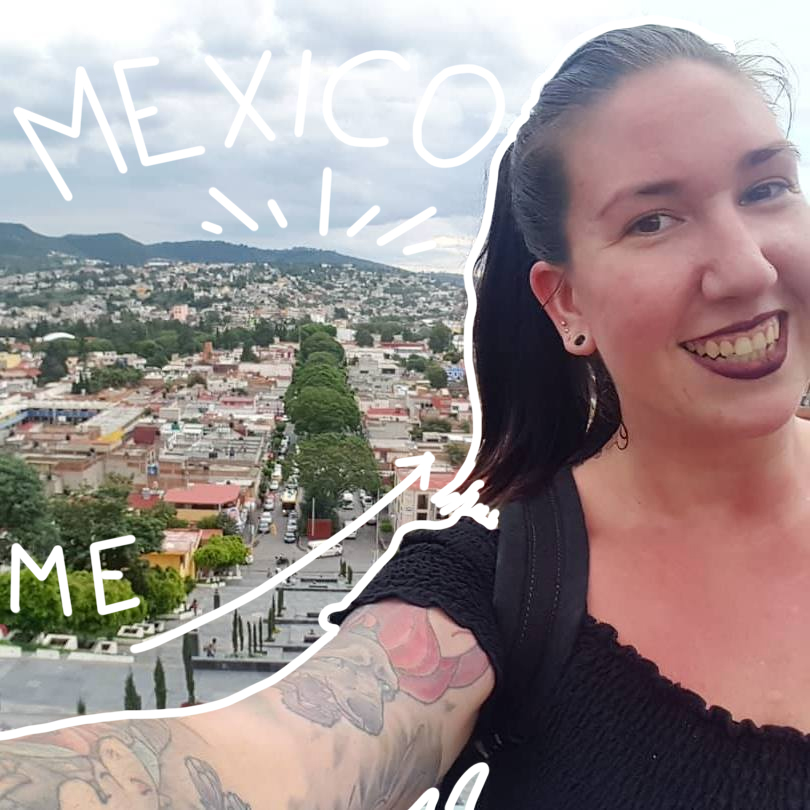

FACT: Researchers have never found anything to indicate that some people are just “better at languages” than others.
And if you ask people who speak 4, 5, or 6 languages fluently? We’ll all tell you the same thing:
We just find learning methods that work for us, then we work really hard.
(And you will too.)
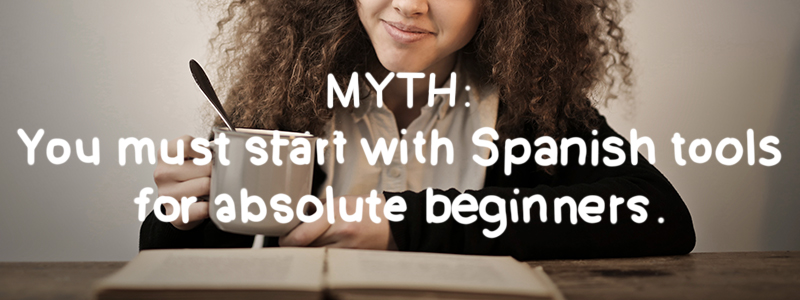
FACT: Learning Spanish from zero and relearning Spanish are two different tasks.
This article will mostly talk about how to learn Spanish from scratch. But this website is dedicated to helping people relearn a language.
You can see our full article about relearning languages here, but the main differences for those relearning Spanish are:
- You might feel discouraged that you forgot (or never fully learned) Spanish earlier.
- You’ll progress with your passive language skills (like listening) much faster.
- Starting from the very beginning may be frustrating.’
So as we continue with this article, we’ll mark special pointers for false beginners with a sprout 🌱 since your Spanish already has some life to it!
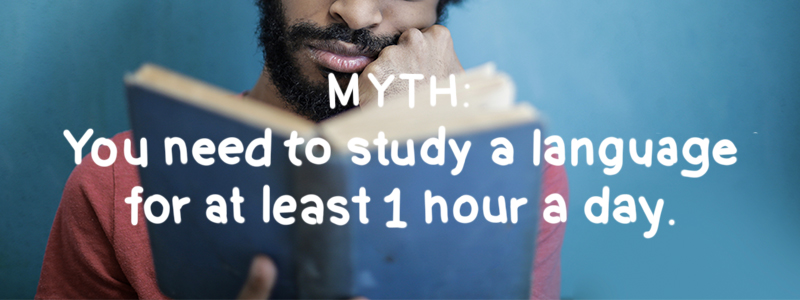
FACT: 5 minutes of concentrated study time will take you a lot farther than a few 2-hour cram sessions that leave you overwhelmed and exhausted after your first week.
It’s better to study consistently and long-term than to try to cram in something in a few days or weeks.
But because Spanish takes a few hundred hours to learn [source], you’ll want two things:
- A daily base habit
- A reach goal on days where you have more free time
- Plenty of fun
Here are two ways that might look:
Daily review sessions of 5+ minutes
1 weekly learning session of 30-60min
Weekend immersion with music, podcasts
Daily review sessions of any recent flashcards
1 weekly learning session of one chapter, section, lesson
Nightly immersion before bed with books or movies
Now, this is just general advice. Ultimately, you’ll need to find a flow that works for your life and your schedule.
The most important things here is that you’re building in concentrated study habits, regular reviews, and still having fun.
(We’ll get to your resources you’ll need soon.)
✏️ REFLECT: What might a good schedule be? What will you do to make sure you don’t get overwhelmed? What will happen if you need to skip a day or week?
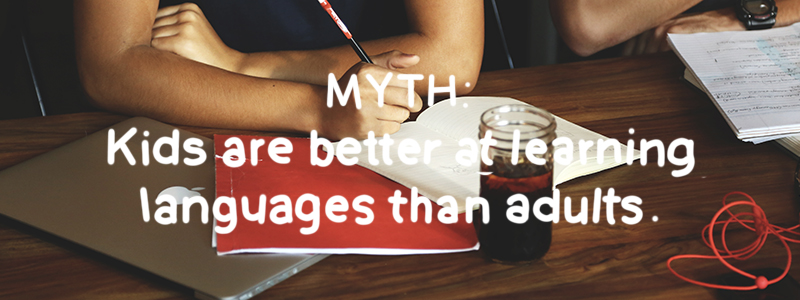
FACT: Studies have shown that while children learn very well in immersion, adults do better with clear instructions about grammar and vocabulary. [source]
So what does that mean?
Immersion learning is fun. But as an adult, you’re also going to need a guiding resource.
(We’ll help you pick out a few great ones in the next section.)
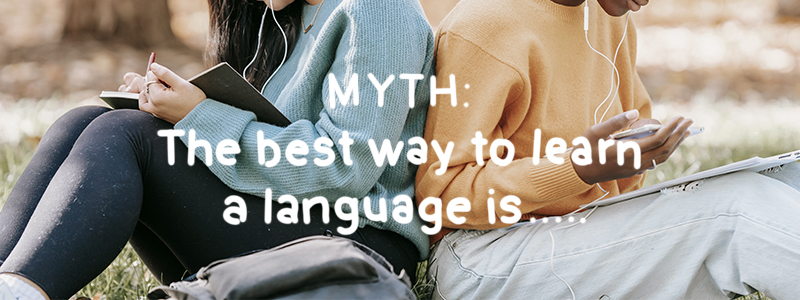
FACT: There is no one best method for how to learn Spanish.
I have learned 7 languages as an adult and experimented with dozens of different methods. Most successful language learners do the same.
Because the key is finding out what’s right for you.
Anyone who tells you their method or tool is the best one is just trying to make a sale.
(And wasting your time on “magic bullet” solutions is going to frustrate you into believing our first myth: that you’re simply no good.)
✏️ REFLECT: What myths did you believe? Do you think you still believe them to some degree?
2. How To Find Your Guiding Resource
By the end if this section, you will know what kind of resource is best for your learning style and pick out your first resource to experiment with. This way, you won’t waste time or money.
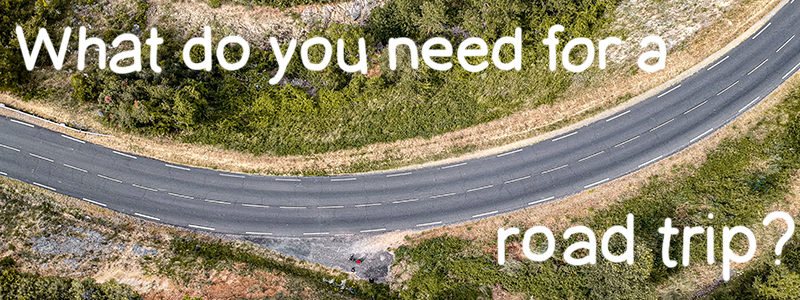
Learning Spanish is an adventure.
Think of it as a beautiful journey by train or an epic road trip. It’ll be filled with plenty of amazing sites, new foods, and great people. (Plus: the best music on the planet.)
So to plan an amazing road trip, we need a few things:
- A good end goal
- A great map to get there
- Plenty of fun stuff to do along the way so our adventure is never boring.

So the first real activity we’re going to do in this How To Learn Spanish Tutorial is figure out our vision goal.
Here’s your writing prompt
(And yes: I suggest writing it.)
✏️ REFLECT: Picture yourself speaking Spanish. Where are you? Who are you with? What are you doing? What activities are you doing? What are you talking about?
Write your favorite day dream(s) out in as much detail as you possibly can.
It’s important that you take some time to really define that day dream.
Because next, we’re going to help you find your way there.

Now we’re going to talk about your guiding resource.
Like any good map, this resource will help you get from where you are now to where you want to be.
Remember: we don’t take a trip just so we can stare at a map. We find adventures because of the culture and experiences that bring them to life.
Similarly, we don’t learn Spanish just to stare at a textbook or class all day.
But we DO need a map (a guiding resource) that is trustworthy, detailed, and reliable so we can get to the more fun stuff in a language.
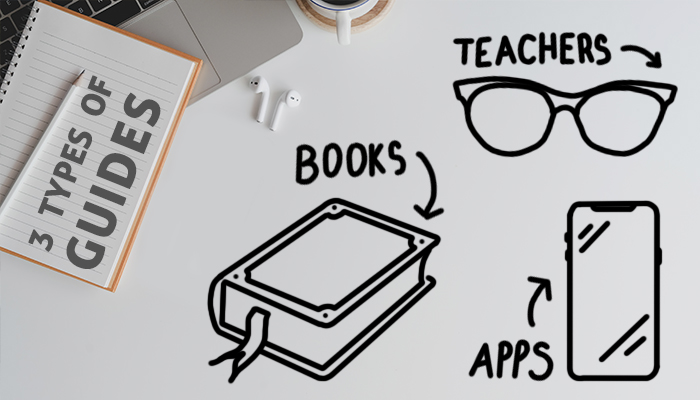
So how do you pick a good guiding resource for learning Spanish?
First, we’ll give you some pros-and-cons of each type of guide.
Second, you’ll do a little quiz about your own situation.
Last, I’ll give you my personal recommendations for various products.
(Remember: this article is ad-free. I am not affiliated with any of these companies and am not trying to sell you anything!)
2a. Pros and Cons of Language Learning Guides
Let’s quickly go over the three main guides you have at your disposal as an at-home language learner.
Once we’ve done the overview, we’ll start helping you pick out what you’ll like the most.

PROS:
- Always in your pocket
- Fun to use
- Contain images and audio
- Can use smart learning algorithms like spaced repetition and active recall
CONS:
- No human connection
- Limited practice speaking, reading, writing
- If they make their money on targeted ads, it’s more important to the company that you keep using the app vs actually learn what you need and leave.

PROS:
- At-your-own pace
- Most detailed types of grammatical explanations
- Many often have web portals with audio components
- Often have reading/writing practice
CONS:
- Not portable
- Not as addicting as apps
- No accountability or human connection like with online teachers or streaks

PROS:
- Human connection and accountability
- Can be done anywhere with an internet connection
- Can be engaging and fun
- Personalized one-on-one options online
CONS:
- Most expensive
- Not every teacher is a good fit
- Students may feel their learning is their teacher’s job and not the student’s personal responsibility (which means slacking in between classes)
✏️ REFLECT: Based on this information, what first impressions do you have about these types of learning tools? What might help you the most with your goal?
2b. Which Language Resource Fits Your Situation?
Now that we’ve gone through the basic pros and cons, let’s look at the real practical-ness of it all.
This chart is based on what are, in my opinion, the most common pitfalls of every type of guiding resource.
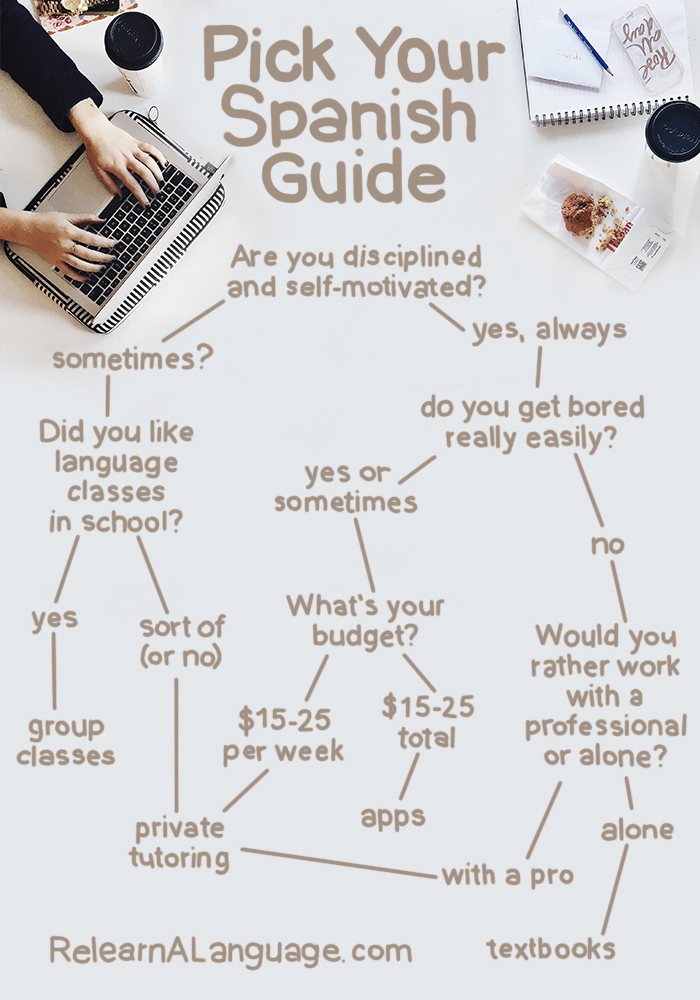
Now, this is a start!
In the next section, we’ll go through my personal (ad-free) recommendations for all of these types of guides.
So if you’re not sure what to do with the information you have so far… don’t worry!
✏️ REFLECT: Do the above quiz. Does this change or reinforce your initial impressions about language learning guides? What do you want to explore in the next section?
2c. My Recommended Spanish Learning Guides
There are an infinite amount of Spanish guiding resources online…
…which is precisely why it’s so hard to find one you like.
Out of the 50 or so different things I’ve tried, here are the guides I personally recommend. (Unsponsored, ad-free.)
Michel Thomas Audio Courses
Type: Audio Courses / App
Price: $80 for beginner levels, $80 for advanced
Starting Level: Absolute beginner or false beginner 🌱
The Michel Thomas audio courses are one of the original repeat-after-me courses. But they differ from competitor Pimsleur in that they primarily focus on verbs and critical thinking.
Great for the backbone of the language. Be warned that they won’t help you with the tiny details (which you’ll need to advance) and that they’ll be extremely difficult for anyone with auditory processing or hearing dificulties.
Mango Languages

Type: App / desktop site
Price: Free through many libraries
Starting Level: Absolute beginners
Mango Languages if my favorite app for tourists. They’ll zoom you through structure with a lot of vocabulary and a bit of grammar.
They’re lightyears ahead of apps like DuoLingo, but ultimately fall short if your goal is full fluency/mastery. (Fun to use in conjunction with other things though, especially on those too-tired-to-study days!)
Assimil Courses
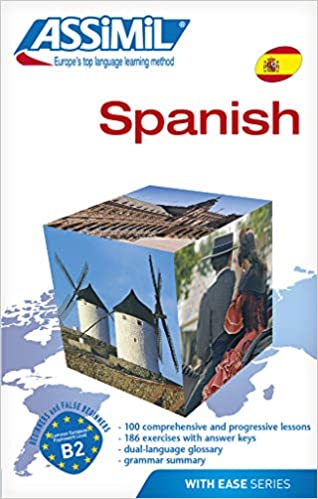
Type: Textbook
Price: $90 new
Starting Level: False beginners 🌱
Assimil is by far the most comprehensive textbook out there. It’ll zoom you through every single detail of Spanish, and has plenty of fun exercises (unlike its main competitors, the Teach Yourself series).
However, for people who aren’t used to studying languages, it feels sluggish (so many explanations) and rushed (not enough practice). Great to have on hand, but no matter what you’ll want to pair it with additional resources.
Practice Makes Perfect Workbooks
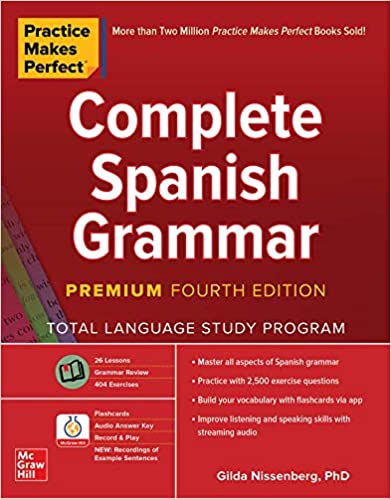
Type: Workbook
Price: $20 per version
Starting Level: False beginners 🌱
Practice Makes Perfect books have by far the best drills for grammar and vocabulary. Unfortunately, they’re non-linear–meaning you can’t really only use them.
But if you pair them with another tool on this list? They’re fun, fast-paced, and bite-sized. I’ve done them in 3 languages and am still in love.

Type: Private online tutoring
Price: $10-30/hr
Starting Level: Any level 🌱
- Your learning is your own responsibility. A teacher cannot beam a language into your head, so you’ll need to review and study on your own. Don’t waste your own time or money if you’re not studying between sessions.
- Cheaper is not always better. The best teacher I ever had was $35/hr, with the least experienced ones lower- or mid-prices. (However, I’ve also had some bad chemistry with higher-level teachers, so this isn’t a steadfast rule.) Your best bet is to audition 3-5 teachers and stick with 2 or so.
Light Speed Spanish
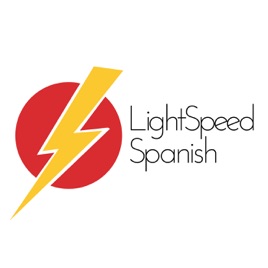
Type: Online subscriptions
Price: Starting at £9.99
Starting Level: Any level 🌱
Light Speed Spanish combines everything: group classes, one-on-one tutoring, fun immersion, grammar books…. you can mix and match to your heart’s content.
All of their tools I’ve worked with have been interesting, extensive, and extremely well explained. They’re one of the most impressive independent language learning companies online, and I highly recommend checking them out no matter what your learning style.
University Classes

Type: Group classes
Price: Depends on country
Starting Level: Any level
Okay, so this article is about how to learn Spanish at home. I know.
But if you find this all totally overwhelming? University classes provide structure, accountability, and human connection.
Not everyone thrives as an independent learner. That’s okay! Plus: you’ll get a nice shiny certificate after (probably).
Travel Immersion Schools
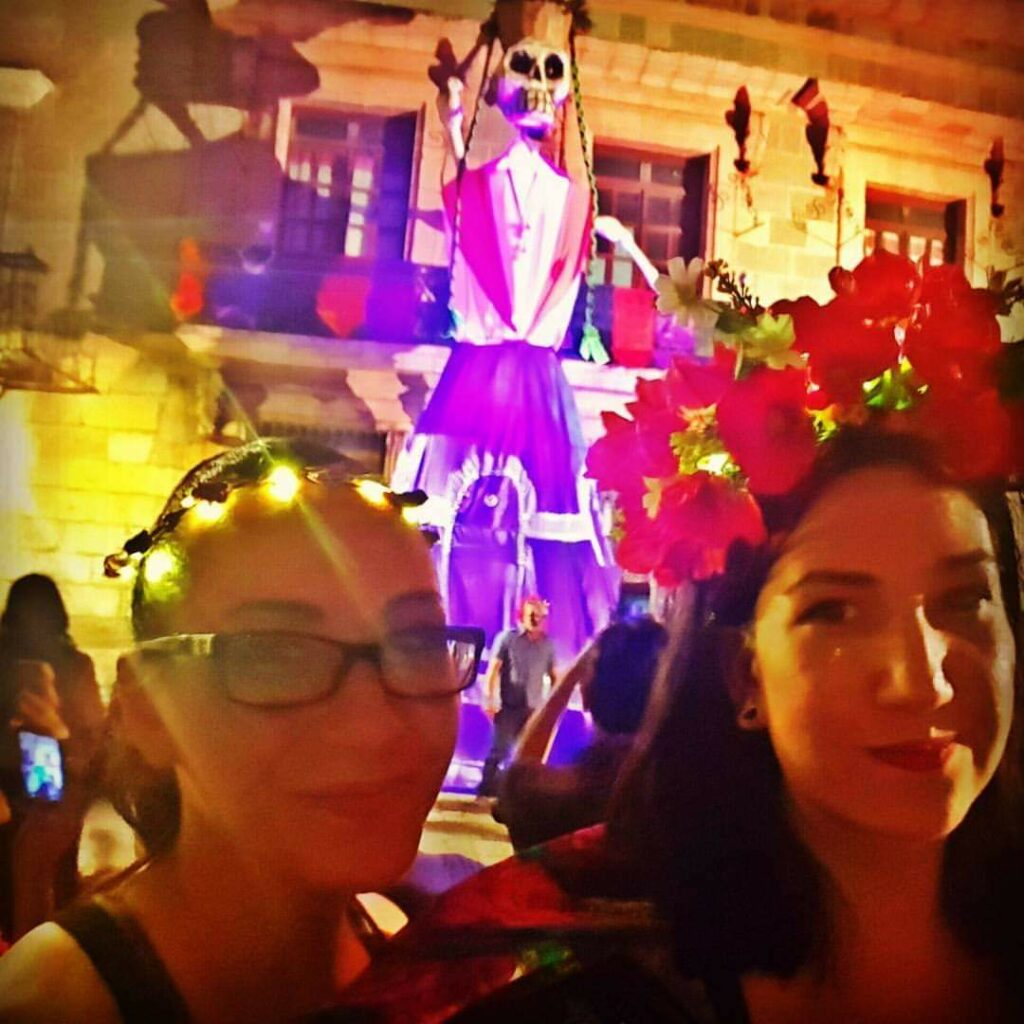
Type: Group or solo classes
Price: Normally starting at $300USD/week (20-30hrs)
Starting Level: Any level 🌱
The above photos is of me (right) and a friend in Oaxaca, Mexico–where I spent my first month of learning Spanish in immersion!
Now, I don’t think in-country immersion is the most cost-effective way of learning, and being suddenly dropped into a new country can be super stressful. But if you have the resources, I highly recommend spending at least a few weeks in immersion at some point during your Spanish learning journey.
For a list of schools, check out my friend Ingrid’s list on her blog.
🛑 STOP HERE: By this point, you should have a resource you want to start learning Spanish with and a second or third option to default to if you don’t click with the first.
We will be referencing these going forward, so make sure this is done before moving foward.
3. The Process of Learning Spanish
By the end of this section, you will understand what lies on the road ahead of you. This way, you won’t quit out of confusion or frustration.
There is no one linear path for how to learn Spanish.
Just like dozens of types of guides exist, there will be a dozen different bumps along the way.
So how do you make sure a small problem doesn’t ruin your great language learning adventure?
Here are some techniques amazing polyglots use to solve the most common language learning problems.
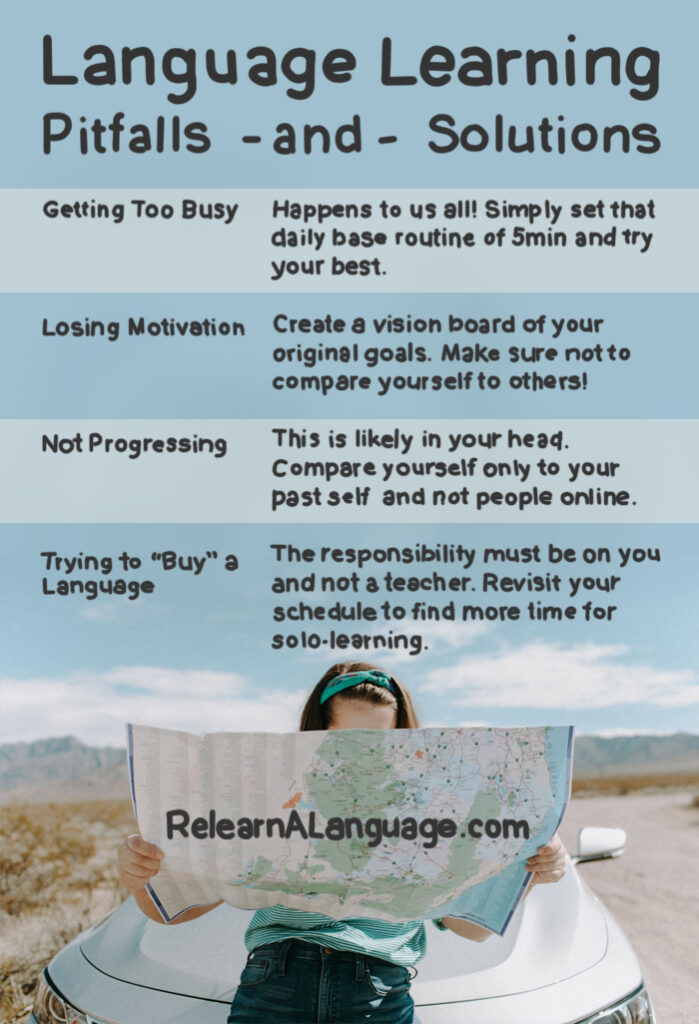
All of the above problems will happen to you at some point. (Yes: all of them.)
And at first, they will seem impossible to conquer. But you need to trust the process.
You are not only learning to speak Spanish.
You are learning how to learn a language.
Experiment. Try new things that don’t work. Don’t be afraid of failure.
One of the things that sets great language learners apart is their ability to adapt to the bumps in the road and try some new strategies.
(Okay. Enough doom and gloom. Let’s get onto the really, really fun part about learning Spanish.)
4. How To Learn Spanish with At-Home Immersion
By the end if this section, you will have a creative, fun plan to start learning Spanish at-home in immersion. This way, you won’t only rely on formal educational materials but start enjoying your Spanish way before you’re fluent!
At the beginning of this article, we talked about Spanish being like an adventure.
Well, in this section we will finally get to the fun, interesting, curious, and tasty parts of that trip.
I keep these lists updated (since this is also the link I regularly send to social media followers who ask for tips on how to learn Spanish ) so come back and reference this section whenever you want.
✅ PLAN: Save this article in your browser or on Pinterest to come back and reference as you continue with your Spanish language adventure!
4a. Spanish Listening Practice
Learning Spanish with Netflix?
Generally, content on Netflix is extremely fast-spoken, full of slang, and full of high-level content–not ideal for learners.
I’ll suggest you start with podcasts and YouTube instead (below), but if you’re determined to use Netflix there’s one Chrome extention you’ll probably like.
You’ll want to pay the monthly fee to get the full value of the extension ($6USD at the time of this writing) but it’s a great tool if you’re determined to use movies before you’re ready.
How to Learn Spanish with Podcasts
There are a number of beginner Spanish podcasts that I highly recommend for learners–especially in conjunction with their transcriptions if you’re still struggling to understand spoken Spanish.

LightSpeed Spanish
Type of Spanish: European Spanish
Transcripts: Available for sale (with free samples available).
Note: Make sure you’re viewing the Beginner Podcast, not the intermediate or advanced shows
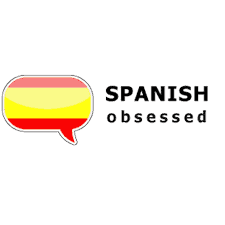
Spanish Obsessed
Type of Spanish: All around the world
Transcripts: Available with annual membership along with worksheets and additional podcast episodes
Note: Make sure you’re viewing the Beginner Podcast, not the intermediate or advanced shows
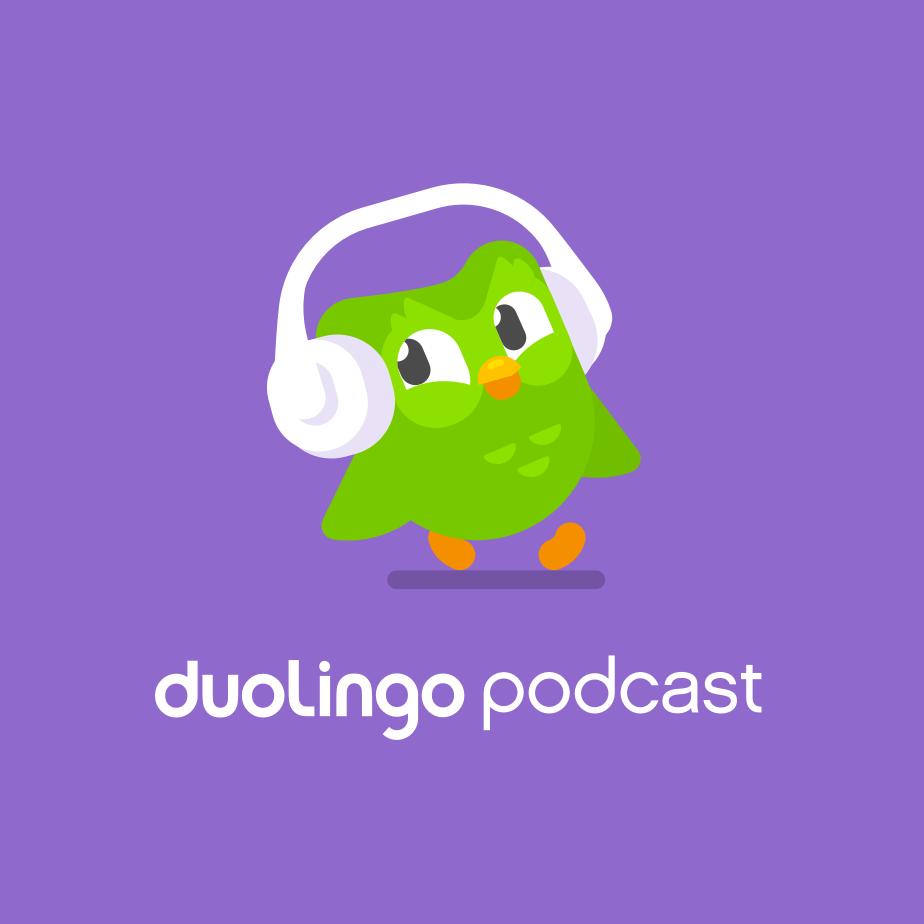
Duolingo Spanish
Type of Spanish: All around the world
Transcripts: Free on the Duolingo site
Note: All episodes are bilingual and don’t distinguish between levels
For more at the intermediate level, I also recommend my friend Ingrid’s list of 40 Spanish Podcasts.
How to Learn Spanish with YouTube
If you have a question about Spanish grammar, you can literally search anything on YouTube and it’ll be answered for you. However, here are my favorite channels for finding quality answers.
Butterfly Spanish
Type of Spanish: Latin American (General)
Best for: Understanding charts and grammar rules
Lightspeed Spanish
Type of Spanish: Castillian / European
Best for: Listening practice + grammar help (their por/para video saved me)
WordPie
Type of Spanish: Latin American (General)
Best for: Vocabulary. Just memorize each Spanish song one-by-one and boom! 100+ new words like magic.
Want to just watch Spanish YouTube for fun? Click here for our article on Mexican YouTubers or here for our article on Puerto Rican Spanish immersion.
4b. Spanish Speaking Practice
How to Learn to Speak Spanish with a Tutor
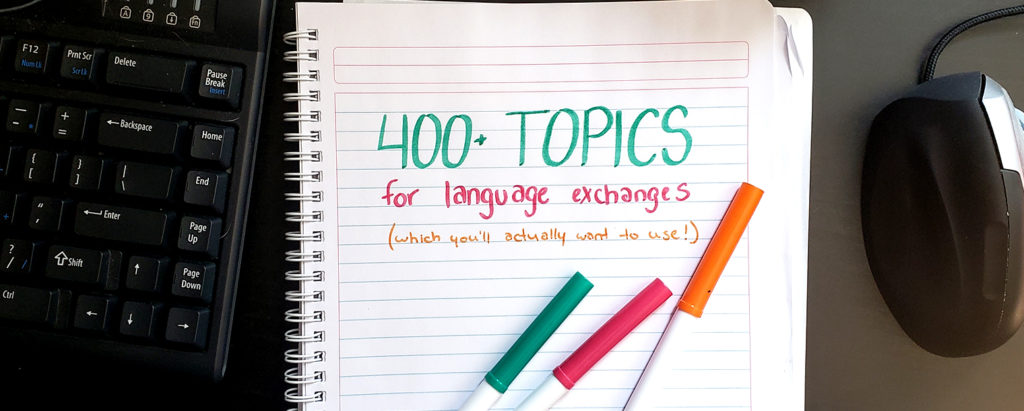
How to Learn to Speak Spanish with Exchanges
Check out our video about how to do a great language exchange with someone else online.
The best part is: it’s free.
The worst part? It’s only free if you can find a great partner.
But learn more, then combine it with our language exchange questions.
4c. Spanish Reading Practice
Reading in Spanish is a fantastic way to slowly put together the building box of a language (grammar, vocabulary, and culture) in a way that’s much slower and easier to understand than listening practice.
Here are our favorite beginner-friendly graded-readers:
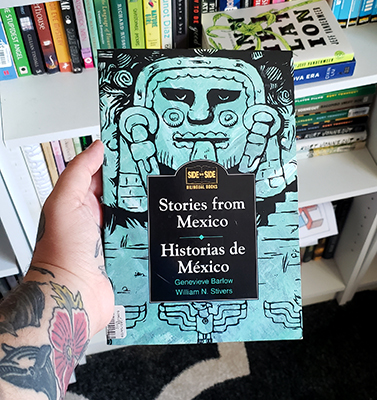
Stories from Mexico
Spanish Type: Mexican / Latin American (General)
Type: Bilingual Short Stories
Level: Advanced Beginner
Notes: Stories are culturally relevant but somewhat challenging
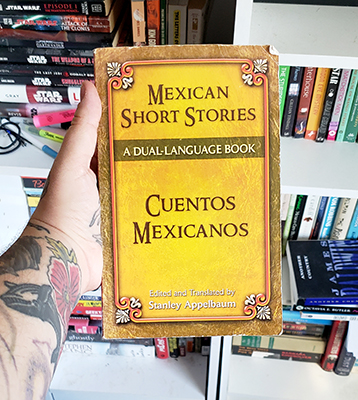
Mexican Short Stories
Spanish Type: Mexican / Latin American (General)
Type: Bilingual Short Stories
Level: Advanced Beginner
Notes: Stories are culturally relevant but challenging for beginners
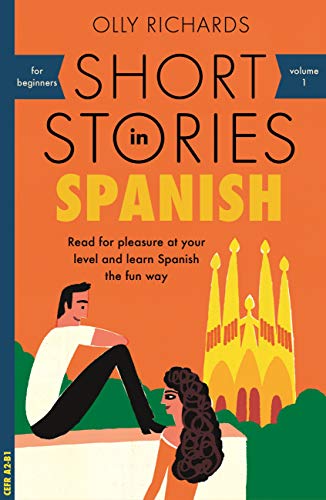
Olly Richards Short Stories
Spanish Type: European / General
Type: Spanish Short Stories + Quizzes
Level: Mid-Beginner
Notes: Easiest stories on this list, but mass-translated and not culturally relevant to any Spanish-speaking country.
For more graded readers and Spanish reading suggestions, check out our list of short stories & novels in Spanish for learners.
4d. Spanish Writing Practice
The reason writing is so helpful in learning a new language is how it mimics the act of speaking (coming up with words out of your head and stringing them together using new grammar) but slowed down.
Here are my favorite ways to practice this fantastic skill.
Writing Prompts

Our list of 400+ language exchange topics doubles as a writing prompts list. Once you have a bit of Spanish under your belt, use everything at the beginner A1-A2 level!
Pair it with our free immersion tracker to make sure you keep it consistent!
The Polygloss App
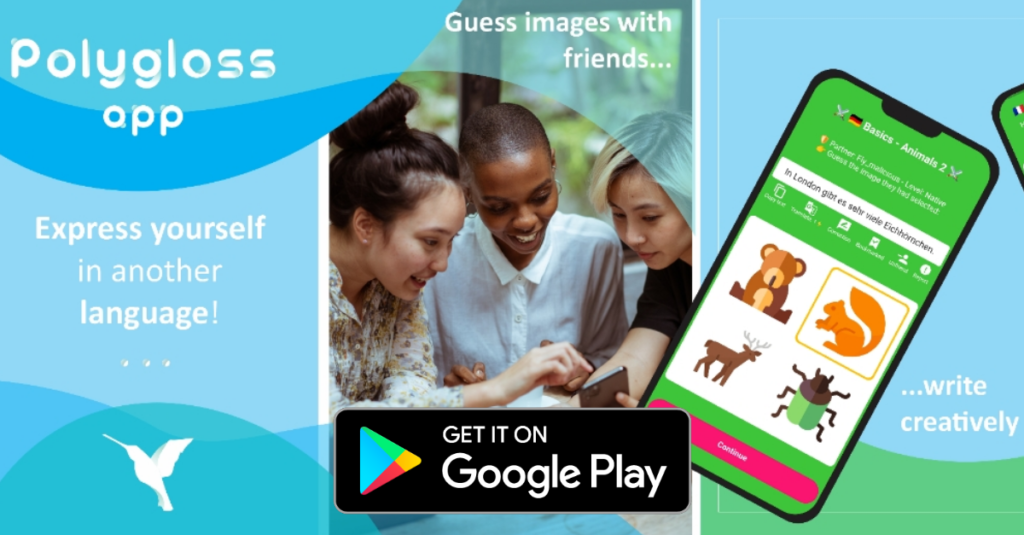
The Polygloss App is the only app of its kind online–connecting users with real native speakers of a language, and getting them to write together!
It’s free for Android and currently testing for iPhone, with a launch expected in mid-2021.
Nightly Journaling

Don’t want the pressure of structure? Simply practice 5-10min of freewriting every night. Talk about what you learned, how you spent your day, what your frustrations are… just in Spanish!
4e. How To Learn Spanish by Embodying It
Learning Spanish through Eating (Yes: Really)
I highly, highly recommend using recipes in Spanish for your weekly meal making.
Throw on some good music, print out the recipe, and start translating any words needed. Then, get to cooking!

Learning Spanish throgh Yoga and Zumba
There are hundreds (if not thousands) of hours of free yoga on YouTube in Spanish.
Easily learn nouns and verbs that have to do with the body, while at the same time connecting with the language in a new and creative way.
For Zumba, you can create a playlist with songs you love. Then, look up lyrics–for instant flashcards every time you dance!
(Personally, part of my daily practice has always been French language yoga and Spanish language Zumba. They’re great ways for me to double-dip between several of my daily needs at once!)
How To Stay Organized with Spanish Immersion
Okay, so you have a ton of immersion materials.
But how do you use it all?????
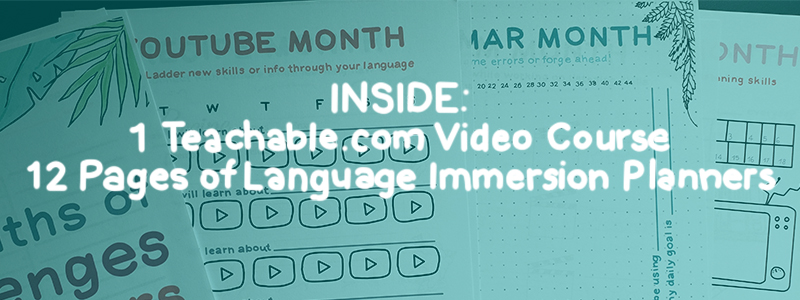
Our free course combines 3 videos and a 12-page pdf tracker to help you not organize yourself for monthly at-home immersion.
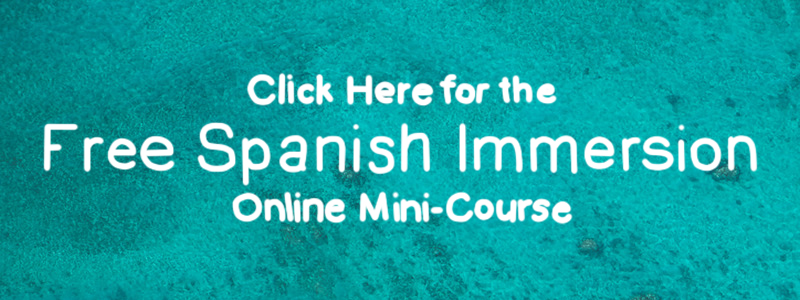
You can pick a new challenge every month and focus on either daily habits or weekly goals.
BONUS: Final Tips on How To Learn Spanish
Finally, if I had to leave you with a last bunch of tips, it would be this.
- Connect with the online learning community. I’m @MultilingualMarissa on Instagram, but there are also infinite Facebook groups and message boards online. Human connection is everything!
- Experiment. Everything I outlined here was extremely flexible on purpose, but for some people it might feel not structured enough. Your first experiments likely won’t be the best way for you to learn Spanish, and that’s okay. It took me about a year to master my own language learning style (nevermind learning the languages themselves), but it can be a wonderful process.
- Keep it consistent. You will have busy days. You will break streaks. You will get overwhelmed. Plan for the inevitable, and then get back on it!
Questions? Feel free to leave me a comment below!
